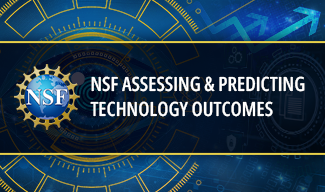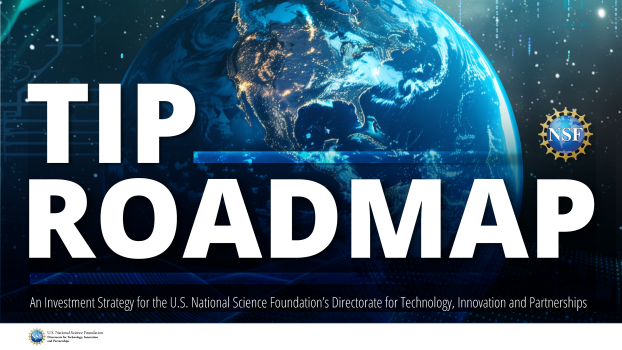The U.S. National Science Foundation has long invested in expanding science, technology, engineering and mathematics to advance U.S. competitiveness. The new NSF Directorate for Technology, Innovation and Partnerships (NSF TIP) continues to build on this mission by creating opportunities to accelerate key technologies to practice, giving rise to economic growth, job creation and worker training for better-quality, higher-wage jobs. NSF TIP utilizes a four-pronged approach to its investments in key technologies.
TIP-initiated investments
In today's world, technology serves as the bedrock of national competitiveness. To retain a leadership position, the United States must not only maintain pace but also leapfrog ahead. These targeted TIP initiatives build on the latest discoveries, pushing innovators to the edge of what's known and channeling their efforts to maximize technological development.
Artificial intelligence
The NSF Privacy-Preserving Data Sharing in Practice (NSF PDaSP) investment emphasizes the role of privacy-enhancing technologies in a responsible and safe AI future.
The NSF Building the Prototype Open Knowledge Network (NSF Proto-OKN) program will build a prototype version of an integrated public data and knowledge framework.
Biotechnology
The NSF Use-Inspired Acceleration of Protein Design (NSF USPRD) investment accelerates the translation of novel approaches to protein design and enables new applications of importance to the U.S. bioeconomy.
The NSF Advancing Cell-Free Systems Toward Increased Range of Use-Inspired Applications (NSF CFIRE) investment accelerates the adoption of cell-free systems, enables new applications of this technology and contributes to the growth of the U.S. bioeconomy.
Communications
The NSF Breaking the Low Latency Barrier for Verticals in Next-G Wireless Networks (NSF Breaking Low) investment will identify and address critical architectural, technical and technological issues to provide the necessary low-latency performance required for the success of key emerging vertical industries.
Technology
The NSF Responsible Design, Development, and Deployment of Technologies (NSF ReDDDoT) program aims to help translate technologies that promote the American public's well-being and mitigate potential harms.
Tech prediction and forecasting

The NSF Assessing and Predicting Technology Outcomes (NSF APTO) program funds research to evaluate the effectiveness of research and development investments and the creation of models that accurately describe past and future technology outcomes.
A network of universities funded by TIP completed a yearlong pilot effort with the release of a report to create a framework for technology assessment.
Read the Securing America's Future: A Framework for Critical Technology Assessment report.
Tech roadmapping

The inaugural TIP Roadmap outlines an investment strategy to ensure U.S. competitiveness for decades. This report is a strategic vision that will guide TIP's initial investment decisions in key technology areas, harness the nation's full geography of innovation and ensure federally funded science and technology appropriately benefits the U.S. initiatives in specific emerging technology areas.

The JASON Defense Advisory Group is an independent panel of elite scientists providing technical assessments to the U.S. government on sensitive science and technology issues. TIP commissioned JASON to develop a set of specific technical investment hypotheses that the directorate could consider pursuing to increase U.S. competitiveness in one of the directorate's key technology focus areas. The priority for JASON's focus is to identify specific opportunities to accelerate the translation of research related to particular classes of advanced materials and/or advanced materials processing methods.
Tech assessments

The NSF National Center for Science and Engineering Statistics (NSF NCSES) explores data and trends within U.S. research and development. Areas of exploration include R&D expenditures among various sectors (businesses, academic institutions, government, nonprofits and research facilities), performers of R&D, sources of funds for R&D, type of R&D (basic research, applied research and experimental development) and geographic location of R&D.
To learn more about TIP's work in emerging technologies, sign up for TIP emails or email emergingtech@nsf.gov.




